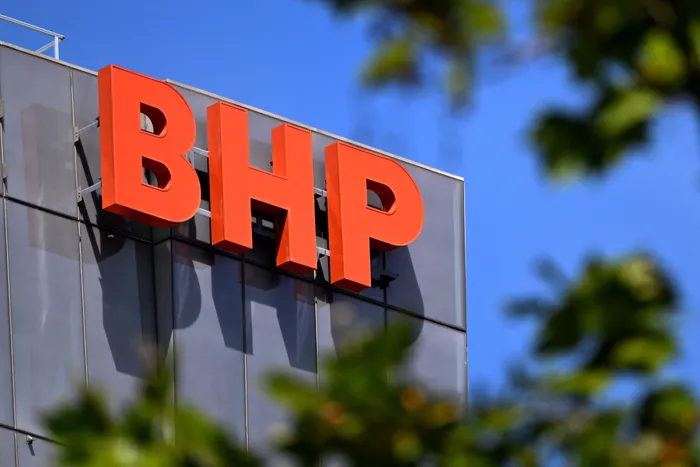BHP delivers record iron ore and copper production amid global uncertainty
Mining

The company logo adorns the side of the BHP global headquarters in Melbourne, Australia. The group generated record iron ore and copper production for the year to June 30, 2025.
Image: Supplied
BHP delivered record iron ore and copper production, demonstrating resilience of the business amid global volatility and uncertainty, CEO Mike Henry said on Friday.
BHP’s WA iron ore operations set multiple records, including for full-year production. South Flank exceeded nameplate capacity production in its first year of operation after being delivered on time and on budget in the 2024 financial year, he said in an operational update for the year to June 30, 2025.
“The efficiency of our infrastructure hubs continues to strengthen performance, with rail, port, and technology investments delivering tangible production outcomes. Our steelmaking coal business increased production by 5%, with improved truck productivity offsetting heavy wet weather and geotechnical challenges at Broadmeadow,” said Henry.
BHP produced more than 2 million tons of copper across the group—its highest level of production in a commodity critical to urbanisation, digitisation, and electrification.
In Chile, Escondida achieved its highest production in 17 years, and Spence saw record production. In Australia, Copper SA finished the year with copper production records in June and for the final three months of the year.
In Canada, Jansen Stage 1 (JS1) continues to progress. “We estimate capital expenditure to be in the range of £7bn to £7.4bn, versus our original estimate of £5.7bn. Our group capex guidance remains £11bn for each of the 2026 and 2027 financial years,” he said.
The estimated cost increase was driven by inflationary and cost escalation pressures, design development and scope changes, and an assessment of lower productivity outcomes over the construction period.
“We expect to update the market on JS1’s timing and optimised capital expenditure estimate in H2 FY26. Given the potential for additional potash supply coming to market in the medium term, and as part of our regular review of the sequencing of capital projects, we are considering a two-year extension for the execution of JS2 from FY29 to FY31,” he said.
Commodity demand globally had remained resilient so far in 2025. This largely reflected China’s ongoing ability to grow its overall export base despite a significant decline in exports to the US, and its ability to deliver robust domestic demand despite the dislocation in the property sector.
Copper and steel demand benefited from an acceleration in renewable energy investment, electricity grid build-out, strong machinery exports, and EV sales.
“While slower economic growth and a fragmenting trading system remain potential headwinds, stimulus efforts by China and the US would help to mitigate the near-term impact. Going forward, China’s 15th 5-year plan is likely to provide more visibility on policies to sustain longer-term growth and development,” the group said.
BHP's copper production came to more than 2mt, up 8%, from strong performances across all operated copper assets, including a 16% production increase at Escondida, record production at Spence, and record fourth quarter quarter production from Copper SA.
“We also delivered record iron ore production, with WAIO producing 290Mt, overcoming the impacts of Tropical Cyclone Zelia and Tropical Storm Sean in the third quarter. The ramp-up of the second concentrator at Samarco ahead of schedule also contributed to our record iron ore production,” the group said.
“We remain on track to achieve FY25 unit cost guidance at Escondida, Spence, Copper SA, and WAIO, and revised guidance at BMA,” the group said.
BHP’s share price slipped 0.32% to R458.07 on Friday.
Visit:www.businessreport.co.za